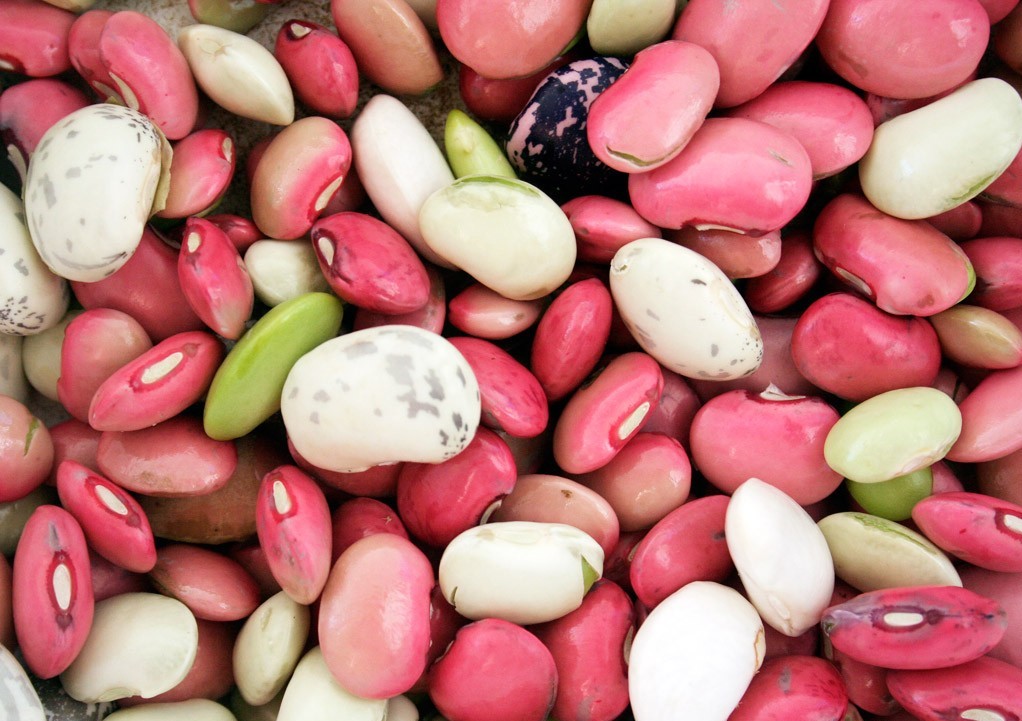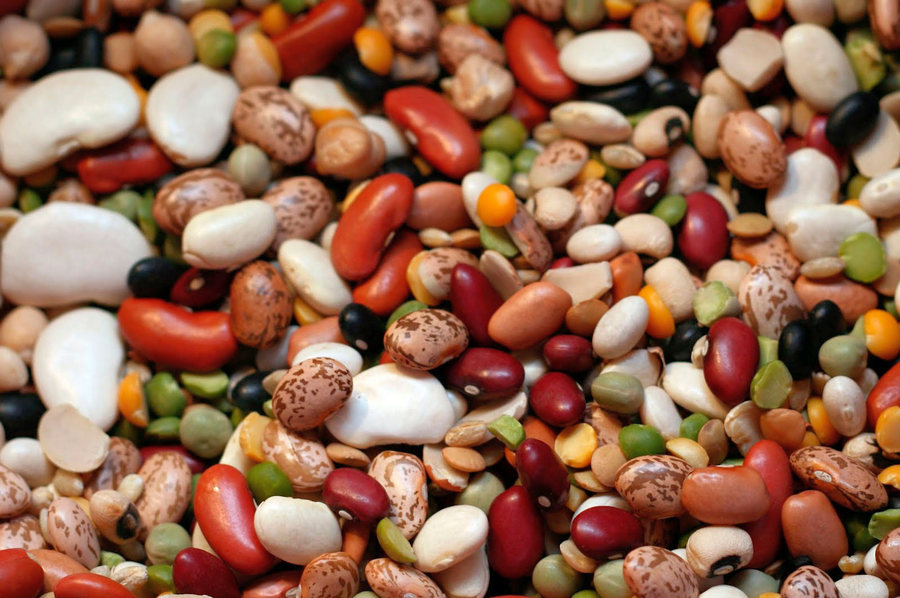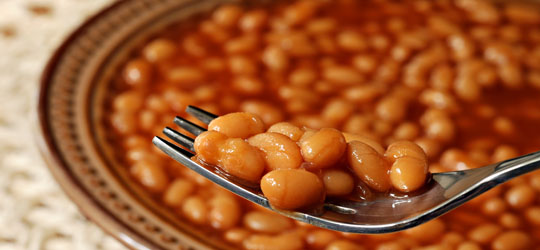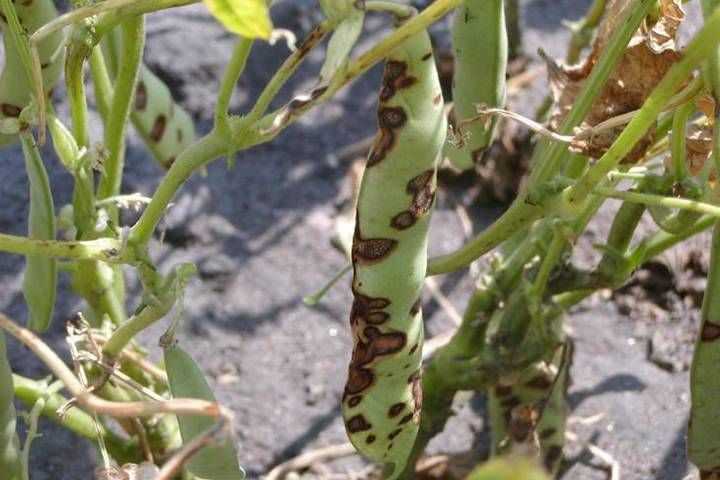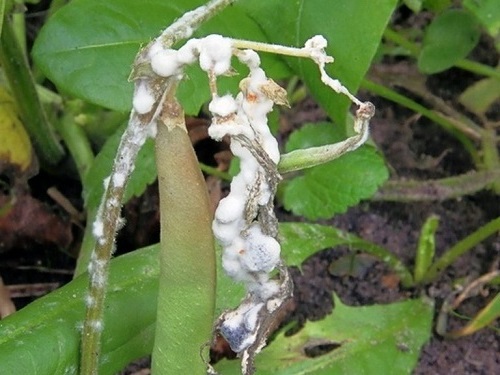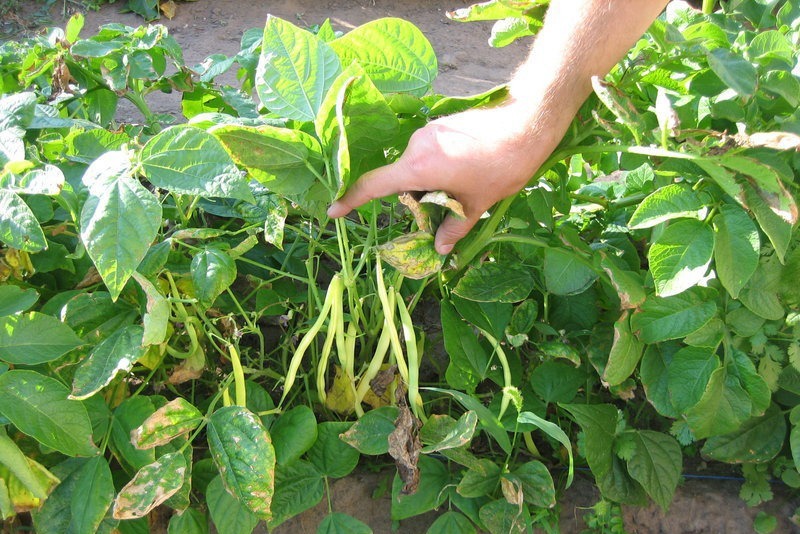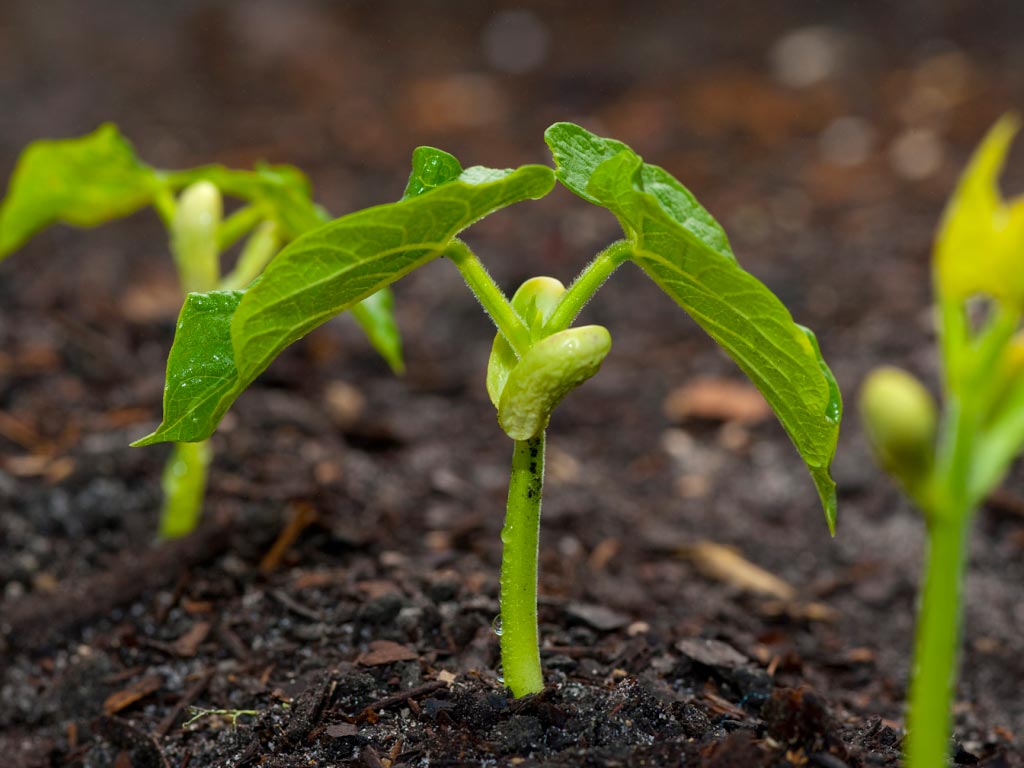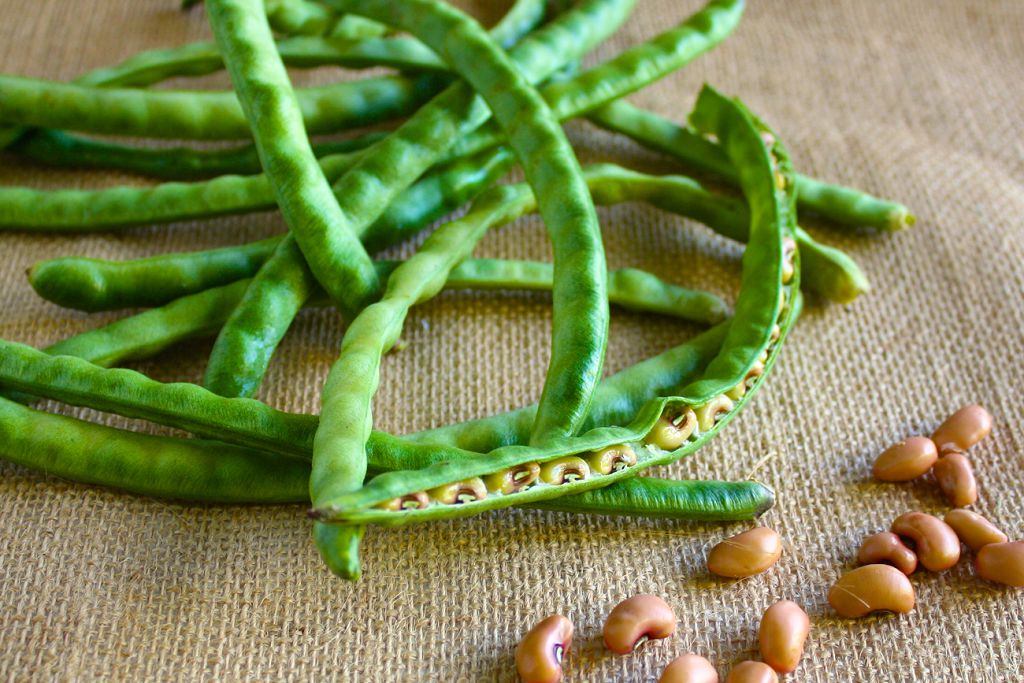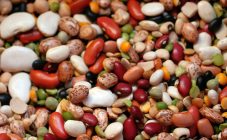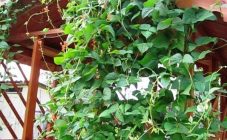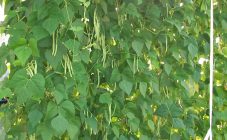Content:
Beans are a common staple in the diet. It is easily digested and low in calories but high in energy. This leguminous vegetable has many varieties and types, it is used both for cooking and for decorating the site.
Culture information
A bean is a plant of the legume family containing inside a pod seeds edible for humans - beans.
Beans and their family originate from the South American continent. It was brought to Europe by Italian travelers, and penetrated into Russia at the beginning of the 16th century, and became a common plant for our latitudes a hundred years later. Now this legume vegetable is cultivated in seven dozen countries around the world.
To the question: whether a bean is a vegetable or not, it is impossible to give an unequivocal answer, because its fruits can be processed into cereals, or you can make a ready-made vegetable dish from it, for example, it is beans stewed or canned in their own juice. The pods develop on a stem - a herbaceous trunk, 0.5 to 3 meters long, which ends in a tap root. The root system of a bean plant consists of a meter-long root-rod and lateral roots extending horizontally to 0.6 meters.
The leaf has a double-pinned appearance and a triple tip. Each bean inflorescence resembles moths, their colors are different. Hanging pods vary in length. There are also different quantities of seeds - from 3 to 20 record pieces, all of them, as a rule, have an elliptical shape. The color of the pods can also vary. and be of the following colors:
- yellow;
- Violet;
- dark purple;
- red;
- green;
- the black;
- variegated or a mixture of several shades.
To answer the question: the bean is a monocotyledonous or dicotyledonous plant, the bean will have to be divided in half, it is easily divided into two cotyledons, which means that this is a dicotyledonous species.
The bean seed itself consists of a protective seed coat and an embryo - the future bean bush. Some species of this plant have a thin layer of parchment under the rigid shutters. On one side of the bean, you can find the place of its attachment to the pericarp. Next to it is a tiny hole through which the embryo is saturated with water - the vas deferens.
Thanks to their remarkable chemical composition, beans have beneficial nutritional properties. So, it contains almost all known vitamins (especially a lot of vitamin C), mineral salts and trace elements such as:
- calcium;
- phosphorus;
- magnesium;
- iron;
- iodine.
Beans are a good helper for removing excess fluid from the body, thereby improving the functioning of the cardiovascular system. The therapeutic effect of this legume on those suffering from diabetes has been confirmed - to normalize the blood sugar level, on which the life of such patients depends, use a liquid and dried extract of bean husks. To the interesting facts about beans, you can add their ability to stimulate the appetite, while maintaining the normal calorie content of the dish.
However, in some cases, the use of this plant can be harmful to health. So, you can not use raw fruit, as well as green pods in food, since they contain harmful components that disappear during cooking.Due to the high content of purines, beans are best excluded from the menu of older people and those suffering from gout.
The main area where this delicious vegetable is used is cooking: in almost all cuisines of the world there is more than one recipe for dishes from it: stewing with herbs, simmering, cooking with meat and vegetables, making soups, mashed potatoes and much more. You can freeze the beans for the winter. Some types of beans are used as a feed product.
Characteristics of species and varieties of beans
The plant can be divided into bush and climbing varieties:
- Common bush beans have increased resistance to unfavorable growing conditions: low temperatures, lack of moisture and others, such plants, up to 0.4-0.6 m in height, are considered early maturing;
- The structure of the curly bean species presupposes the presence of long twisting stems, up to five meters high; such plants always have many fruits, so they begin to bear fruit later, and the beans ripen longer; Another benefit of curly beans is their high decorative properties.
Also, this culture is classified according to the type of use in cooking:
- Asparagus species are also called vegetable or sugar species - they are characterized by non-rigid shells on the beans and the absence of hard fibrous parts, so they can be cooked and eaten whole;
- In non-sugar or husk beans, only the bean seed itself is edible, that is, the beans, and they must be peeled (peeled) of hard shells;
- The universal varieties of beans can be consumed completely until the final ripeness, but the mature plant is supposed to cook only beans, since they coarse as they mature.
Within each type, beans can be divided into smaller subgroups as well as varieties. In total, about fifty of the most commonly used varieties of beans are known.
As an example, shell beans have:
- fava - beans with a dark brown color;
- Winga are white beans with a dark dot on the side;
- chali - has especially large and healthy beans;
- pinto - there are many red spots on the fruits, since their iron content is high;
- black beans have small grains, a dark shell, and a white interior, the variety is distinguished by an increased amount of protein;
- lima - a type of beans with white or green grains, they are very useful for the cardiovascular system;
- navy - beans with small white beans-beads, rich in vitamins.
Bush beans also have many varieties that are characterized by early ripening of beans:
- Allure, Laura, Panther - asparagus varieties;
- Amalthea, Bona - vegetable species;
- Curly vegetable - an early ripening species that must be tied up;
- Golden Saxon is one of the most productive varieties;
- Nerine is a hybrid species with an average maturity;
- Oran - grain beans;
- Gardener, Secunda - unpretentious grain varieties with late dates;
- Tara - vegetable late variety;
- Sisal - best suited for freezing and preservation.
Curly beans also pleases with a variety of varieties:
- Gazebo - its feature - early ripening and high yield of fruits;
- Great delicacy - beans ripen late, excellent yield and taste;
- Violetta - in addition to early ripe fruits suitable for canning, it is also characterized by highly decorative flowers and foliage;
- Bluhilda - a variety with a high protein content in grains;
- Snow Queen - the plant is able to form a trunk of a very high height, therefore it needs support for growth.
Pests and diseases of culture
Like any botanical species, pests and diseases pursue beans. Fungal formations, viruses and insects cause the most harm; as a result of their vital activity, the root of the plant is most often affected.
Powdery mildew
Under the influence of rainy warm weather, spores of the fungus multiply, which cause this bean disease.The first sign of damage is the presence of gray spots on the foliage in the form of drops, the description of which resembles dew. You can save the plant by removing the affected leaves and destroying them.
Anthracnose
This disease of legumes manifests itself in the appearance of brown fungal lesions on the fruits and leaves, after which the foliage withers, and the beans become inedible.
White and root rot
Putrefactive processes in the first stage affect the rhizome, after which they move to the plant stem - it becomes covered with a sticky bloom with small drops of white or pink color. The disease leads to attenuation of the growth of beans and shedding of beans. Spores of this fungus are quite difficult to fight.
Bean mosaic
The disease is caused by a virus and manifests itself in the appearance of a sediment on the foliage that has a green or brown color. Then swelling and rot are formed at the point of contact of the pest. The mosaic cannot be treated, the affected bushes must be destroyed.
Among insects, the main pest of bean crops is aphids; whitefly butterflies and sprout flies also cause harm.
Wrestling with diseases and pests beans itmainly prevention:
- correct sowing regime;
- good insolation and airing of the beds;
- re-growing the plant in the same place only after three years;
- the garden bed after harvesting should be cleaned of the remnants of rhizomes and grass, the soil dug as deep as possible (during the procedure, it is desirable to feed the earth with potassium-phosphorus mixtures);
- to protect the plant from white dew and rot, seed material is treated with pesticides by soaking before use;
- if bugs get into the harvested beans, they must be frozen at sub-zero temperatures for a couple of days or steamed in a water bath;
- using only healthy and high-quality seeds and regular inspection of plants for disease damage.
During the growing season, bean crops can be sprayed once with an agrochemical composition such as "Aktara", "Verticillin" or "Decis".
Top dressing beans
The composition of top dressing for bean beds, the question of how much to add it, and the very need for it depends on the nature of the soil in a particular area and the characteristics of the climate. So, on chernozems, there is no need for nitrogen feeding; on less fertile soils, legumes should be fed with nitrogen, phosphorus and potassium. To reduce the acidity of the soil, lime flour is added to it at a dosage of 0.3-0.4 kg per 1 sq. meter.
Under already sprouted bean seedlings, only mineral fertilizing is applied - organic matter can cause clogging of crops and their death. Autumn use of humus is allowed only in low-humus areas.
Phosphate-potassium fertilizers such as superphosphate and potassium chloride are used. It is also necessary to take care of the sufficient content of molybdenum in the soil, the lack of which leads to disturbances in the structure of the seed of the growing beans.
Agricultural technology of cultivation
What are the ideal conditions for beans? These are, first of all, loam or sandy loam with a neutral or slightly acidic soil reaction and the necessary level of potassium-phosphorus compounds, calcium and magnesium. Also important are the predecessors of beans in the beds: it is not recommended to sow them in places where other legumes or corn previously grew, since they carry diseases that are hereditary. The germination of the culture is best after cucumbers, tomatoes and cabbage, which loosen the soil with their roots. The area for beans should be protected from the wind and warm well.
Before planting, you need to dig up the soil and prepare the seeds by soaking them in potassium permanganate for 2 tens of minutes. The finished seed can be planted in two stages:
- in mid-May when the soil is heated to plus 14 degrees.
- 10-12 days after the first term.
There is a scheme for growing beans in a seedling way, since this plant is thermophilic. The grains are soaked in water at room temperature for 24 hours, then transferred to cheesecloth and placed in a warm place. The seeds that have hatched are planted in a substrate prepared in containers in 3-6 cm depressions, after which the container is covered with film or glass to create a greenhouse effect. You should also remember about moistening the soil using a conventional sprayer. After the appearance of the first shoots, the "roof" is removed, after the release of the first pair of leaves, the young beans are moved into a large container, the curly species are provided with support for further growth.
Sowing in open ground is carried out to a depth of 2-3 cm with a step of 6 to 8 cm and a half-meter distance between rows; the use of special seeding belts can facilitate this process. The bed is covered with foil for a while.
Bean care consists in proper watering: young shoots are moistened to the fifth leaf, and then renewed until the plant begins to bloom. Taking a break is important because excess moisture can kill the legume. You should also loosen the aisles twice, the time difference is two weeks. For curly beans, it is important to have a support - these can be trellises (about 3 m high), fences and just walls of buildings.
Beans are a valuable source of protein, vitamins and minerals. The history of the use of this plant product dates back to ancient times, and botanists have long determined which family the beans belong to, how to use them and how best to grow them. Breeders have bred many varieties of different species of this wonderful legume plant: vegetable, climbing and asparagus. After reviewing them, you can choose the one suitable for a particular site.
